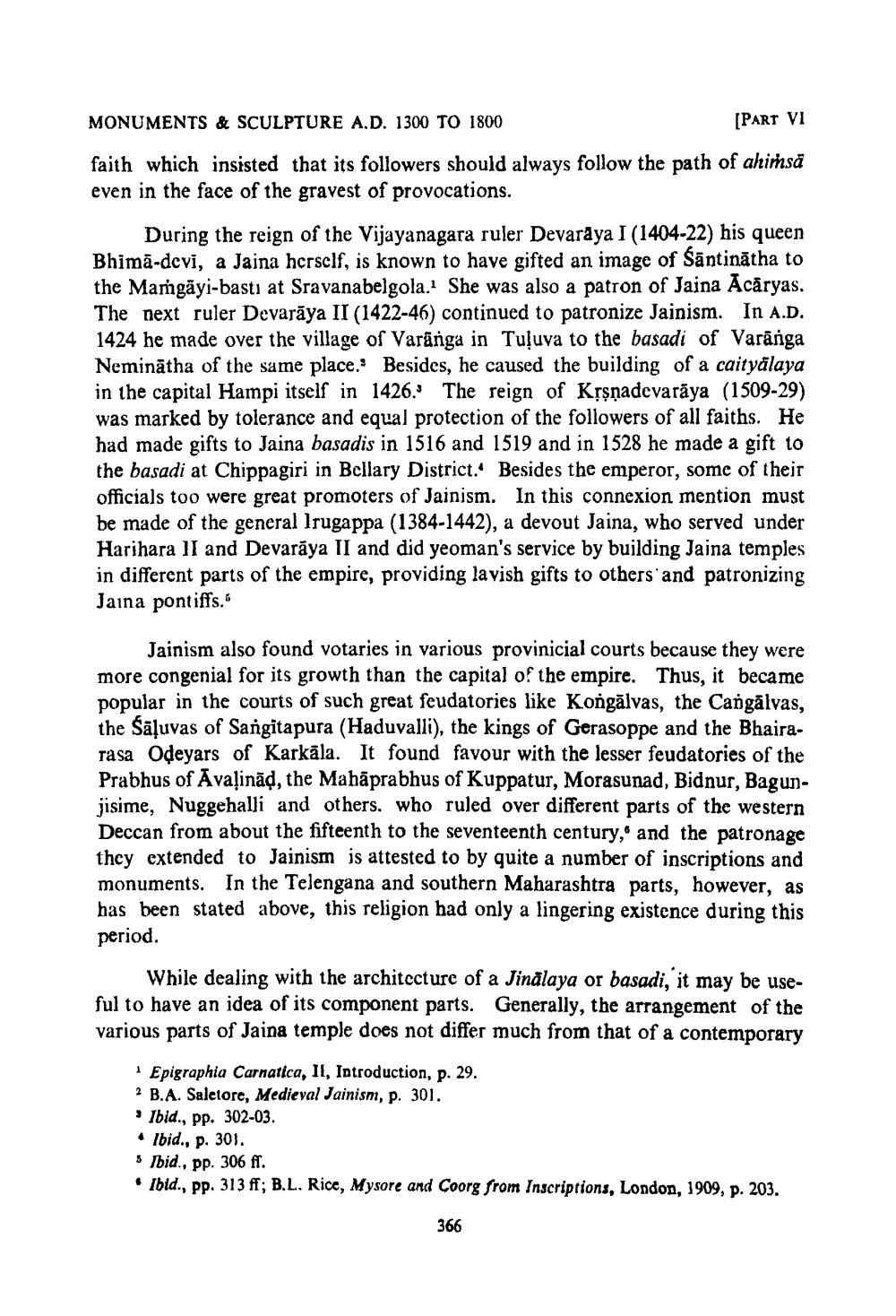________________
MONUMENTS & SCULPTURE A.D. 1300 TO 1800
[PART VI
faith which insisted that its followers should always follow the path of ahimsā even in the face of the gravest of provocations.
During the reign of the Vijayanagara ruler Devaraya I (1404-22) his queen Bhimā-devi, a Jaina herself, is known to have gifted an image of Santinātha to the Margãyi-bastı at Sravanabelgola. She was also a patron of Jaina Acāryas. The next ruler Devarāya II (1422-46) continued to patronize Jainism. In A.D. 1424 he made over the village of Varänga in Tuluva to the basadi of Varānga Neminātha of the same place. Besides, he caused the building of a caityalaya in the capital Hampi itself in 1426. The reign of Krşņadevarāya (1509-29) was marked by tolerance and equal protection of the followers of all faiths. He had made gifts to Jaina basadis in 1516 and 1519 and in 1528 he made a gift to the basadi at Chippagiri in Bcllary District. Besides the emperor, some of their officials too were great promoters of Jainism. In this connexion mention must be made of the general Irugappa (1384-1442), a devout Jaina, who served under Harihara II and Devaraya II and did yeoman's service by building Jaina temples in different parts of the empire, providing lavish gifts to others and patronizing Jaina pontiffs.
Jainism also found votaries in various provinicial courts because they were more congenial for its growth than the capital of the empire. Thus, it became popular in the courts of such great feudatories like Kongālvas, the Cangälvas, the Sāļuvas of Sangitapura (Haduvalli), the kings of Gerasoppe and the Bhairarasa Odeyars of Karkāla. It found favour with the lesser feudatories Prabhus of Āvaļinād, the Mahāprabhus of Kuppatur, Morasunad, Bidnur, Bagunjisime, Nuggehalli and others. who ruled over different parts of the western Deccan from about the fifteenth to the seventeenth century, and the patronage they extended to Jainism is attested to by quite a number of inscriptions and monuments. In the Telengana and southern Maharashtra parts, however, as has been stated above, this religion had only a lingering existence during this period.
While dealing with the architecture of a Jinalaya or basadi, it may be useful to have an idea of its component parts. Generally, the arrangement of the various parts of Jaina temple does not differ much from that of a contemporary
Epigraphia Carnatica, II, Introduction, p. 29. 2 B.A. Saletore, Medieval Jainism, p. 301.
Ibid., pp. 302-03. • Ibid., p. 301.
Ibid., pp. 306 fr. • Ibid., pp. 313 ff; B.L. Rice, Mysore and Coorg from Inscriptions, London, 1909, p. 203.
366




